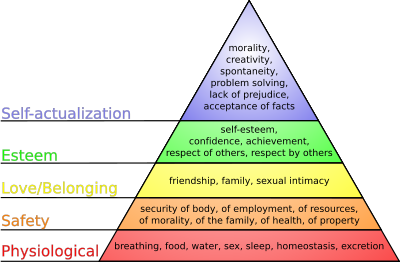Many companies have the concept of “A”, “B”, and “C” players, although GE’s Jack Welch made this famous in one of his books. The reason there is no classification for a “D” player is because companies should ultimately get rid of anyone not performing to the expectations of, at the very least, a “C” player.
Characteristics of an “A” player:
- Challenges the status quo in order to drive positive change
- Delivers on objectives without having to have someone hold their hand
- Will largely succeed in their tasks despite the deadlines, politics, and team involved
- Wins
Characteristics of a “B” player:
- Does what they are supposed to do
- Has a good track record
- Needs guidance sometimes but not hand holding
- Sometimes goes above and beyond but is not the norm
- Has the potential to step up to be an “A” player
- Wins most of the time
Characteristics of a “C” player:
- Sometimes does what they are supposed to do
- Has a moderate track record
- Rarely, if ever, goes above and beyond
- Needs a fair to high level of hand holding
- Has the potential to step up to be a “B” player
- Sometimes wins
Most companies are bottom heavy. That is, they spend a large deal of time working with and fostering “C” players with the expectation that “A” and “B” players are already doing a good job and don’t need attention. Part of what Jack Welch and GE advise is that companies shift their paradigm to focus more on the “A” and “B” players, thus making them more top heavy. The basic idea is that you give “C” players a set goal and opportunity to become “B” players. If they don’t meet the expectations in the given timeframe, send them on their way. This allows management to focus on cultivating “B” players into “A” players and better supporting the already existent “A” players.
Simple enough, right? Just don’t forget about the culture shift that will happen with this and what it means to the company.
The basic philosophy is going to differ between each class of employee. An “A” player will have a different outlook on values, vision, and ethics than a “B” or “C” player will. Each class of player will have different ideas of what they are looking for, what they can contribute, and what being part of the company means to them. What this means is that as a company shifts its weight from the bottom to the top the overall culture of the organization will change.
Don’t get me wrong here – I’m not talking about the core values or the culture that is transcribed in the mission statement and broadcast to the public. What I am talking about is the basic idea of what is important to employees.
Each class of employee will have distinctly different needs, each of which will typically correspond back to Maslow’s Hierarchy of Needs. Maslow’s basic idea is that human needs can be visualized as a pyramid.
Figure 1: Maslow’s Hierarchy of Needs
Here are the basic steps, from bottom to top, and how they relate to the typical work environment:
- Physiological
This is the bottom of the pyramid. This typically relates to physical workplace safety. Construction workers are more likely to be focused on this step than are office workers. Likewise, police and soldiers are likely going to be more focused on this step than even construction. The main concern here will be whether something on the job will prove to be harmful or not. - Security
The security of this phase is more related to peace of mind than physical security. Security generally relates to whether or not the job is stable. Do workers worry about being demoted, not getting a stable paycheck, or getting laid off? - Love and Belonging
The idea that an employee can come into work and feel like part of a team falls into this category. Employees worried about this stage will often feel like they are an outside or loner and not fully part of the team. They may feel that they are moving in their own direction, which is incongruent to the direction of the team or company. - Self Esteem
This is the idea that when a worker contributes something he or she feels that it was of value and important to the organization. Workers stuck in this stage will generally be worried about the quality of their work and whether their peers and superiors view their work in the same light and with the same respect that they do. - Self Actualization
This is the top of the pyramid. This step focuses on creativity, morality, philosophy, and other higher level objectives. The concerns of people in this step are going to be whether they are afforded enough leeway to do things like be creative and whether the actions they take are moral and ethical.
The basic concept here is that as lower level needs are met the person is then able to shift their focus to higher level and more complex needs. This means that “C” players may be highly focused on the stability of their job and continuing to get a paycheck while “A” players are more worried about autonomy, the ability to be creative, and doing what they feel is morally and ethically right.
The transition from an “A”, “B”, and “C” player paradigm to an “A” and “B” one will almost always include a cultural shift in order to accommodate the different level of needs required by the majority. As the company shifts away from focusing primarily on “C” players to focusing primarily on “A” and “B” players the hierarchy level at which the collective company’s need is at is raised.
For example, lets say the old company was 50% “C” players. “C” players are worried about security and they make up the majority of the organization so there will be a large portion of management that is devoted to holding hands, regimenting work schedules, and looking over employees shoulders. As this 50% of “C” players is either shifted to “B” players or released the new makeup of the company may be more along the lines of 80% “B” players and 20% “A” players.
If the management that is used to dealing with “C” players continues to focus on the same problems they will inevitably miss the mark and alienate “B” and, especially, “A” players. Without shifting the cultural paradigm along with the performance expectations two things will happen. First, a portion of “B” players will fall into a “C” player category. If they are being treated like “C” players regardless of what they do, why not act like them? Second, “A” players will leave. Regardless of the state of the economy “A” players are always in high demand. Even if they are not able to find a job immediately, they eventually will. Either way, they will leave.
In order to successfully rid a company of “C” players the focus must be two fold: performance and cultural expectations. Without this, companies simply shift the bar higher but ultimately still have “C” players in the mix. In addition, and perhaps most importantly, failure to shift cultural expectations will inevitably result in the loss of “A” players, which is corporate suicide.

